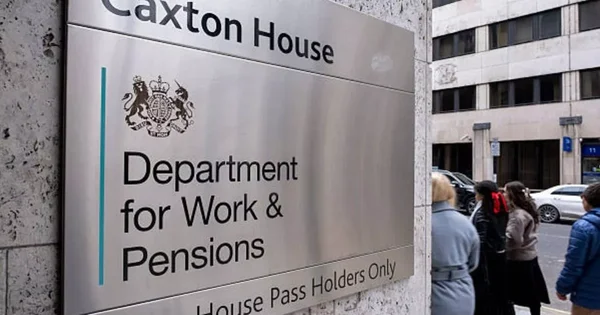HMRC Warns Savers About Unexpected Tax Bills on Interest Earnings
HMRC has been sending letters to savers whose interest earnings have exceeded their Personal Savings Allowance (PSA), with many recipients unaware they now owe tax. The increase in such correspondence reflects the impact of elevated interest rates on previously modest savings accounts that are now generating sufficient returns to breach tax-free thresholds.
HMRC sends tax calculation letters between June and March of the following tax year to those with tax overpayments or underpayments. This is not a new enforcement campaign but rather standard procedure that has become more visible due to higher interest rates making more savers liable for tax on their returns.
The situation particularly affects holders of fixed-term savings products, which accumulate interest differently from regular accounts. Fixed-rate bonds roll up interest throughout the term rather than paying it annually, creating concentrated tax liabilities when accounts mature. Many savers who opened these accounts when rates were lower now find their maturity payments push them over annual allowance limits.
The Personal Savings Allowance was introduced to provide tax relief on modest savings interest, but static thresholds combined with rising rates have reduced its protective effect. Even conservative savers who calculated their deposits based on historical low rates may now face unexpected tax obligations.
Understanding Personal Savings Allowance Thresholds for 2025/26
The Personal Savings Allowance for 2025/26 provides £1,000 tax-free interest for basic rate taxpayers and £500 for higher rate taxpayers, while additional rate taxpayers receive no allowance. These thresholds create dramatically different tax implications for identical savings amounts across different income levels.
The standard Personal Allowance is £12,570, with basic rate tax applying up to £50,270. Basic-rate taxpayers earning below this threshold benefit from the full £1,000 interest allowance, providing substantial protection for most modest savers in this income bracket.
Higher-rate taxpayers face more restrictive treatment. Those earning above £50,270 up to £125,140 qualify for only £500 in tax-free interest annually. This reduction means savings generating more than £500 in interest become immediately taxable, creating a steep financial cliff for those crossing income thresholds.
Additional-rate taxpayers earning above £125,140 receive no Personal Savings Allowance whatsoever, making every penny of savings interest immediately taxable. This tiered system means identical savings accounts produce vastly different after-tax returns depending solely on the account holder's employment income.
Fixed-Term Savings Products Create Tax Complications
Fixed-rate savings bonds present particular challenges for tax planning due to their unique interest payment structure. Unlike easy-access accounts that distribute interest monthly or annually, fixed-term products accumulate all interest throughout the investment period and deliver it as a single payment upon maturity.
This payment structure can create unexpected tax threshold breaches. A saver depositing £3,500 into a three-year fixed bond offering five percent annual returns would receive approximately £552 at maturity. While this total might seem modest spread over three years, the entire amount counts against a single year's allowance, immediately exceeding the £500 limit for higher-rate taxpayers.
The concentration of multiple years' interest into one tax year amplifies the problem. Rather than receiving roughly £184 annually across three separate tax years, the entire £552 is assessed against one year's Personal Savings Allowance. This mechanism catches even cautious savers off-guard, particularly those who calculated their initial deposits based on annual interest projections.
The timing of maturity payments can also create complications for tax planning. Savers may find their fixed bonds maturing in years when their income has increased, pushing them into higher tax brackets with reduced allowances, or when they have other sources of savings interest that combine to exceed thresholds.
Tax Rate Differentials Amplify Financial Impact
The tax implications extend beyond simple threshold breaches, with different taxpayer categories facing substantially different rates on excess interest. Higher-rate taxpayers pay 40 percent tax on any interest exceeding their £500 allowance, compared to the 20 percent rate applied to basic-rate taxpayers.
A higher-rate taxpayer exceeding their allowance by £100 faces a £40 tax charge, representing a significant proportion of modest interest earnings. In contrast, a basic-rate taxpayer would pay only £20 on the same excess amount. These calculations demonstrate how income-based tax rates compound the already restrictive allowance limits.
The mathematical reality becomes particularly harsh for fixed-bond holders. Someone investing £7,000 in a two-year bond at five percent would receive £700 upon maturity, creating a £200 excess for higher-rate taxpayers. The resulting tax bill of £80 represents more than 11 percent of the total interest earned, significantly reducing the investment's net return.
For additional-rate taxpayers, the situation is even more severe, with 45 percent tax applying to all savings interest without any allowance protection. This creates substantial disincentives for high earners to hold standard savings products outside tax-sheltered vehicles.

Standard Savings Accounts Also Generate Tax Liabilities
Traditional savings accounts aren't immune from these tax implications, particularly for those maintaining larger balances in today's elevated interest rate environment. An £11,000 deposit earning five percent annual returns generates £550 in yearly interest, immediately creating tax obligations for anyone earning above £50,270 annually.
Even basic-rate taxpayers face exposure with larger deposits. A £21,000 savings balance earning five percent produces £1,050 annually, surpassing the £1,000 threshold and creating taxable excess. These scenarios demonstrate how quickly tax liabilities accumulate across different savings levels and current interest rates.
Conservative savers aren't exempt from these considerations. A £15,000 deposit earning a modest four percent annually generates £600 in interest, still exceeding the £500 limit for higher-rate taxpayers. These calculations reveal how modern interest rates have transformed previously safe savings levels into potential tax liabilities.
The automatic nature of bank interest reporting to HMRC means these threshold breaches are detected systematically, regardless of whether savers realize they've exceeded their allowances.
HMRC's Detection and Collection Procedures
HMRC has implemented systems to automatically identify savers exceeding their Personal Savings Allowance, with banks and building societies reporting interest payments directly to the tax authority. This information gets matched against individual tax records to identify breaches requiring additional tax collection. Check how to do tax return with Pie.
For employed individuals and pension recipients, HMRC typically adjusts tax codes to collect additional tax automatically through payroll deductions. This mechanism ensures collection without requiring separate payment arrangements, though it can create confusion for recipients unaware of the underlying savings tax liability.
If savers don't receive a tax calculation letter by 31 March following the relevant tax year, they must contact HMRC directly to avoid potential penalties. This places responsibility on individuals to monitor their own compliance, even when they may be unaware they've breached allowance limits.
The estimation process for future years relies on historical data. HMRC projects next year's interest earnings based on the previous year's returns, which can create complications for savers whose circumstances change significantly between years or whose fixed-term products mature at different times.
Broader Implications for Savings Strategy and Tax Planning
This development represents a fundamental shift in the savings landscape, where traditional financial prudence now carries potential tax consequences that many savers didn't anticipate when making their deposits. The combination of rising interest rates and static allowance thresholds has created a trap affecting thousands of previously compliant savers.
Financial advisers increasingly recommend that savers monitor their interest earnings more closely and consider the tax implications of different savings vehicles. Some suggest spreading large deposits across multiple tax years to avoid concentrated threshold breaches, though this requires careful timing and planning.
The situation highlights the advantages of tax-sheltered savings vehicles. ISAs provide completely tax-free returns up to annual contribution limits, making them increasingly attractive as standard savings rates rise. However, ISA contribution limits may not accommodate all of a saver's deposits, particularly for those with substantial cash reserves.
Non-taxpayers with income below £12,570 may be able to earn up to £18,570 in savings interest tax-free, depending on their total income from all sources. This highlights the importance of understanding how different types of income interact with savings allowances.

Final Summary
The increase in HMRC correspondence regarding Personal Savings Allowance breaches reflects the intersection of elevated interest rates with static tax thresholds, rather than any new enforcement campaign. This situation affects thousands of savers who opened accounts when rates were lower and who now find their returns generating unexpected tax liabilities. For full official details on tax on savings interest
The particular vulnerability of fixed-term bond holders highlights how different savings products interact with annual tax allowances. The lump-sum nature of bond maturity payments creates concentrated tax events that can push even modest savers over their limits, despite their effective annual returns remaining reasonable when spread over the full investment period.
The income-based structure of the Personal Savings Allowance system creates additional complexity, with higher earners facing both reduced allowances and elevated tax rates on excess interest. This double penalty makes tax planning increasingly important for anyone earning above basic-rate thresholds who maintains significant cash savings.
HMRC's standard procedure of sending letters between June and March following the relevant tax year means many savers remain unaware of their liabilities until well after the interest was earned. This timing can create cash flow challenges, particularly when tax is collected through adjusted PAYE codes in the following year.









